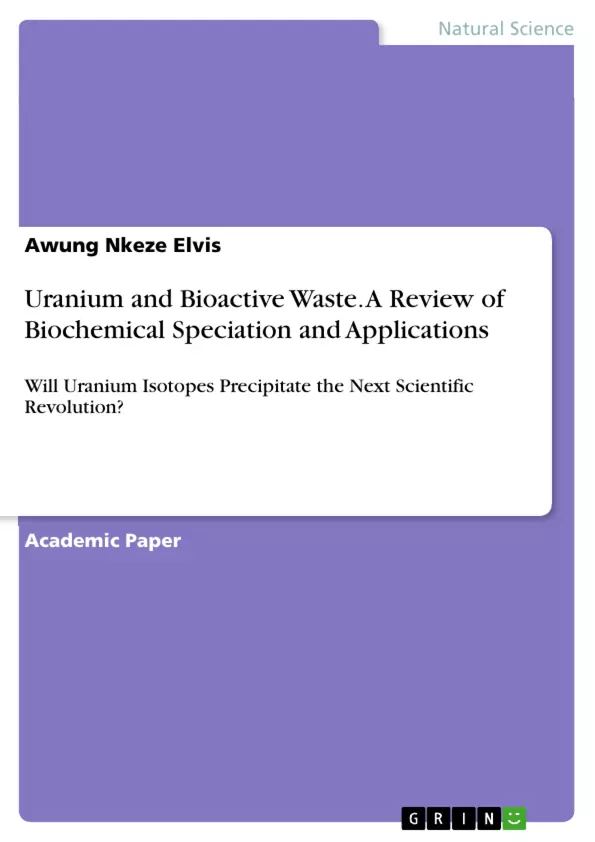The potential role of uranium isotopes in precipitating the next scientific revolution is a topic of interest. Uranium has been the subject of studies exploring its behaviour, speciation, and applications. This article explores the fingerprinting of the biotic reduction of uranium and its implications for understanding uranium deposits. It also explores the applications and behaviour of uranium. This variation can be used as a tracer for environmental and paleogeochemical applications. The development of advanced analytical techniques, such as in-flight fission experiments and mass spectrometry, has enabled the discovery of new isotopes, including palladium isotopes. Additionally, the use of highly luminescent terbium-organic frameworks has shown promise for the ultrasensitive and selective detection of uranium. However, the generation, disposal, and recycling of uranium and its isotopes as radioactive waste present challenges and risks, requiring careful management and remediation procedures. Overall, the study of uranium isotopes offers valuable insights into various scientific disciplines and has the potential to contribute to future scientific revolutions.
Inhaltsverzeichnis (Table of Contents)
- INTRODUCTION
- DISCUSSION AND IMPLICATIONS
Zielsetzung und Themenschwerpunkte (Objectives and Key Themes)
This article explores the potential of uranium isotopes to precipitate the next scientific revolution. It investigates the behavior, speciation, and applications of uranium isotopes, focusing on their use in nuclear safeguards, environmental monitoring, and the detection of radioactive contaminants.
- Fingerprinting of biotic reduction of uranium isotopes and its implications for understanding the formation of uranium deposits.
- Applications of vibrational spectroscopy methods, such as Raman and IR, to detect and identify uranium species.
- Development and use of uranium particle reference materials for nuclear safeguards and the measurement of uranium isotope ratios.
- Analysis of nuclear material and environmental samples using mass spectrometric techniques, including TIMS, SIMS, and ICP-MS.
- Development of highly luminescent terbium-organic frameworks for the ultrasensitive and selective detection of uranium.
Zusammenfassung der Kapitel (Chapter Summaries)
- INTRODUCTION: This chapter introduces the potential role of uranium isotopes in driving the next scientific revolution. It reviews existing research on uranium's behavior, speciation, and applications, highlighting the significance of understanding its role in various scientific disciplines.
- DISCUSSION AND IMPLICATIONS: This chapter examines the applications of uranium isotopes, particularly in nuclear safeguards, environmental monitoring, and the detection of radioactive contaminants. It discusses the use of high-precision uranium isotopic measurements to identify sources of subsurface contamination, including natural and anthropogenic sources.
Schlüsselwörter (Keywords)
The key themes and concepts discussed in this article include uranium, uranium isotopes, applications, scientific potential, biotic reduction, vibrational spectroscopy, nuclear safeguards, environmental monitoring, radioactive contaminants, and mass spectrometry.
- Quote paper
- Awung Nkeze Elvis (Author), 2023, Uranium and Bioactive Waste. A Review of Biochemical Speciation and Applications, Munich, GRIN Verlag, https://www.hausarbeiten.de/document/1381340


